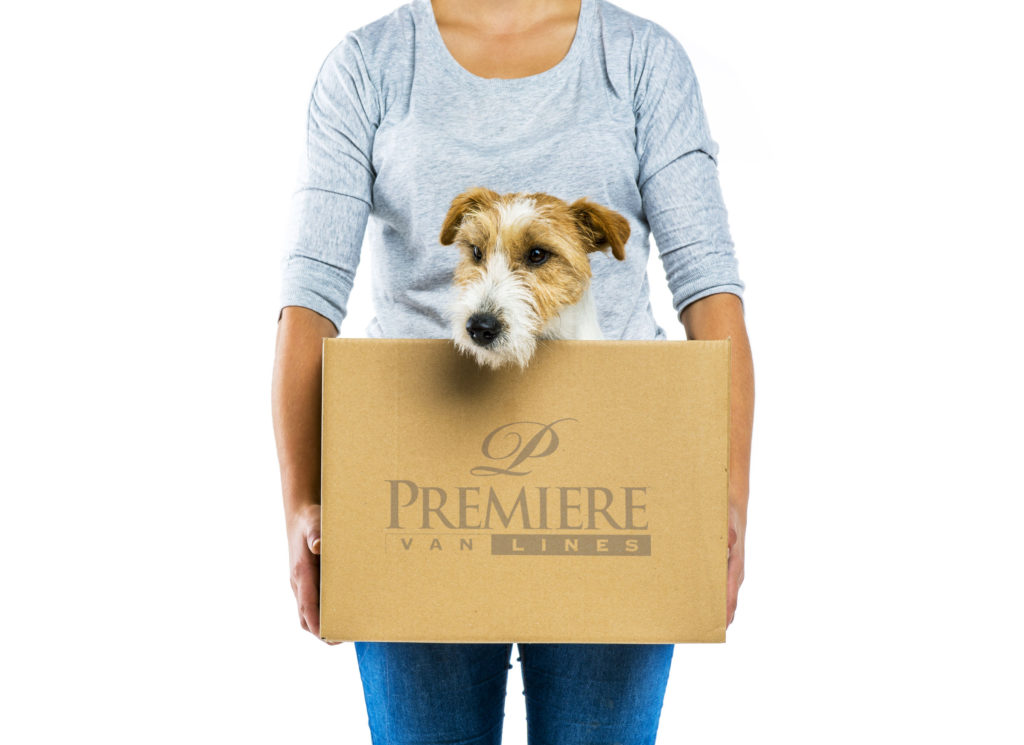If you’re a pet owner, you’ll undoubtedly agree that your pet is truly a member of your family. From providing companionship to reducing stress levels and upping your daily exercise – pets have always proven great value.
As a member of your clan, your pet’s daily regime and schedule will naturally be affected once you decide on moving homes. Like most family members, pets thrive on routine and familiar surroundings. This means you’ll need to ensure you’re doing some pre-planning when a busy move schedule related to your pets. Whether you’re moving locally or long distance from Fredericton, New Brunswick or another Canadian city, here are some useful tips to make moving pets much easier and safer:
1. Make Arrangements
If you’re moving long distance, air travel might be the only practical way to transport your pet comfortably. To do this, you can either go through pet relocation services, who’ll make all the arrangements for you, or you can schedule things on your own. If budget permits, it’s always a good idea to work with a company familiar with various airline regulations. This way you don’t have to worry about making boarding arrangements, take care of transportation, obtain a travel carrier or assign a handler for drop-off and pick-up.
2. Obtain a Health Certificate
Make a veterinarian appointment to have your pet checked and ensure vaccinations are up to date. Once this is done, have your vet complete a health certificate and carry it with you during the move. If you’re relocating to another country, research the specific regulations as it relates to importing your pet. Some countries require a quarantine period, so additional arrangements will need to be made.
3. Choose an Airline
Depending on your destination, you’ll likely find that not all airlines accept pets for air travel. While some airlines permit small dogs and cats to travel within the cabin, generally pets are placed in cargo hold. This can bring up the issue of temperature, since cargo is an area where the aircraft is not climatically controlled. Occasionally, a pet with confirmed reservation may also get “bumped” if the airline deems it unsafe to travel due to extreme hot or cold temperatures. This is why having a professional take your pet to a boarding facility can be very helpful.
4. Select a Flight
If possible, have your pet booked on the same flight you’re travelling on, and arrive early to ensure your pet is checked in. This is especially important if you’re not using a pet relocation service. Once you’re checked in, ask to be present as your pet is loaded onto the aircraft so you can collect your him/her when you flight lands. It’s also a good rule of thumb to book pets on direct flights, this eliminates them getting loose or lost when being transferred to a connecting flight.
5. Purchase a Travel Carrier
Soft-sided carriers are typically used for small pets travelling in the aircraft cabin. Larger pets being transported in cargo should be placed in a hard-sided carrier large enough for them to lie down or stand up. Make sure there’s proper ventilation and a sturdy locking mechanism. Also label the outside of your carrier with all your contact information. If possible, purchase the carrier a few weeks prior to your flight, so your pet can get accustomed to it. This will reduce your pet’s stress level once they’re placed inside for air travel.
6. Take a Photo
Have a good-quality photo of your pet handy, in case of the unlikely event that they escape and a search at the airport is necessary.
7. Pet Identification
Make sure your pet is wearing a collar that includes an identification tag with your contact information. If your pet isn’t already micro-chipped, consider getting this done before the flight. Stay away from packing your pet’s leash inside the travel crate as there’s a chance it could get tangled, choke or hurt your pet. Instead, give the leash to your airline or pet relocation service personnel.
8. Trim Nails
Have your pet’s nails trimmed a few days before travel so they don’t get caught in any opening inside the travel carrier.
9. Food Before the Flight
It’s okay to give a small amount of water, but don’t feed your pet for four to six hours before a flight. You can also place a travel bowl with a few ice cubes inside the craft, for additional hydration during the trip.
10. Tranquilizers
Most veterinarians will tell you it’s not a good idea to tranquilize a pet for air travel. If you’re taking a pet on a long car trip and they suffer from motion sickness, consult with your vet to obtain appropriate medication.
11. Take Your Pet to Your New Home
When you collect your pet at the airport, have a bottle of water with you in case they need to be hydrated. Once you reach your new home, give your pet a chance to explore new surroundings. Set up their bed inside a room with a door, so they can either sleep near a family member, or get used to new premises on their own. Be sure to give them your attention during this transition period and before you know it they’ll have adjusted.
As you can see, moving pets can be done with a lot less stress if you do some pre-planning. For more information or assistance in making arrangements, call our Premiere Van Lines Fredericton branch at (506) 357-5562 or contact your local Premiere Van Lines office.
